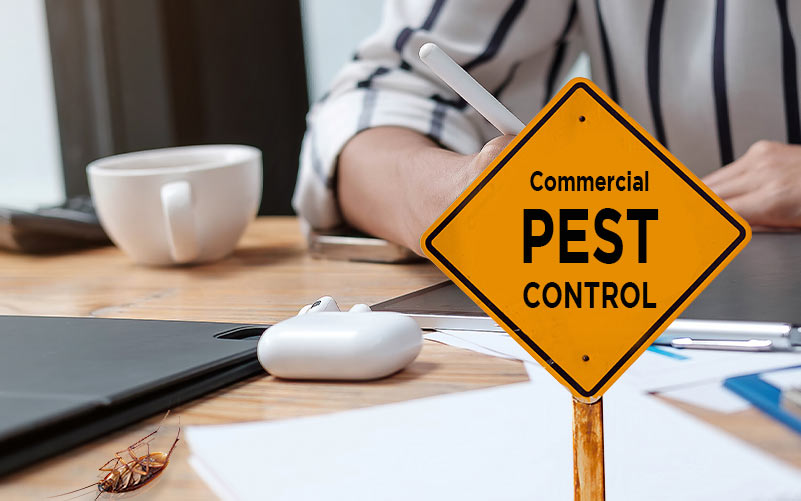Quality A1 Pest Control Services Charlotte - Secure Your Home
Quality A1 Pest Control Services Charlotte - Secure Your Home
Blog Article
Bed Bug Treatment Break Down: Contrasting Chemical Vs. Non-Chemical Solutions
In the world of insect control, specifically when handling the relentless issue of bed pests, the selection in between chemical and non-chemical therapy services can be a pivotal one. Both strategies provide unique benefits and drawbacks, affecting aspects such as performance, security factors to consider, and overall price. By checking out the nuanced information of each technique, a more clear understanding of which course to pursue in attending to a bed bug problem can be obtained.
Efficiency of Chemical Therapies
Chemical treatments for bed insect invasions have actually been commonly acknowledged for their potent and rapid efficacy in getting rid of these pests. When thinking about the efficiency of chemical treatments, it is critical to understand that they can give a quick and complete service to a bed pest problem.
Additionally, chemical treatments have the benefit of offering residual impacts, indicating that they can remain to get rid of bed pests even after the preliminary application. This recurring action is particularly beneficial in combating any possible re-infestations. Furthermore, the quick activity of chemical treatments can bring relief to individuals facing extreme bed bug problems, allowing them to restore control of their space promptly.
Safety Worries With Chemical Solutions
One important facet that requires mindful factor to consider when using chemical services for bed insect treatment is making certain the safety of owners and the setting. Direct exposure to certain chemicals made use of in bed pest treatments can lead to respiratory concerns, skin irritation, or various other damaging reactions, especially in people with pre-existing conditions or level of sensitivities.
Moreover, the ecological effect of chemical solutions is another considerable factor to consider. Some chemicals utilized in bed insect treatments might be dangerous to helpful pests, wild animals, and environments if they seep into the dirt or water systems. It is important to make use of chemical therapies deliberately, complying with safety standards, and taking into consideration less hazardous options to minimize these dangers and make certain the secure and effective monitoring of bed pest problems.
Benefits of Non-Chemical Techniques
Taking into consideration the possible security issues and ecological effect associated with chemical solutions for bed insect treatment, exploring non-chemical approaches presents an encouraging choice with a number of distinct benefits. Non-chemical treatments are environmentally pleasant, as they do not contribute to air or water contamination, making them a lasting option for pest control.
Additionally, non-chemical options can be efficient in targeting bed pests, including hard-to-reach locations where chemical therapies may not permeate. Approaches such as heat treatment, vacuuming, steam cleaning, and cushion encasements give thorough eradication without making use of dangerous chemicals. Moreover, non-chemical techniques can be less turbulent, calling for very little prep work and enabling for quicker reentry into treated areas. In general, opting for non-chemical bed bug therapy methods not just focuses on safety and environmental defense but additionally makes certain extensive and effective parasite control.
Limitations of Non-Chemical Treatments

In addition, non-chemical treatments commonly need numerous applications to attain effective eradication. This can be lengthy and may not constantly ensure total removal of all bed pests and their eggs, particularly in hidden or hard-to-reach places.
In addition, the success of non-chemical treatments heavily depends on correct implementation and thoroughness, which can be challenging for individuals without specialist knowledge. Poor application of non-chemical methods might cause insufficient obliteration, leading to relentless infestations and the requirement for added therapies.
Consequently, while non-chemical treatments have their advantages, it is important to recognize these limitations and consider them when identifying one of the most efficient approach for taking care of bed pest invasions.
Price Comparison: Chemical Vs. Non-Chemical Options
Offered the limitations related to non-chemical therapies, a necessary aspect to evaluate in the context of bed bug management is the cost contrast between chemical and non-chemical options. Chemical treatments generally include the application of pesticides by professionals, which can range from $250 to $900 per website link room, depending upon the extent of the invasion and the dimension of the area to be treated. In contrast, non-chemical therapies like warmth treatment or heavy steam can be a lot more expensive, with costs ranging from $1,000 to $6,000 for an entire home. While the preliminary expense of chemical treatments may appear lower, numerous treatments might be needed to completely eliminate the problem, possibly boosting the total price. On the various other hand, non-chemical alternatives may give a more green and lasting service, although they can be cost-prohibitive for some people. Inevitably, when taking into consideration the cost of bed insect therapy choices, it is very important to evaluate the in advance expenditures against the performance and lasting sustainability of the picked approach.
Verdict

Considering the potential security worries and ecological impact associated with chemical services for bed pest therapy, checking out non-chemical techniques provides an encouraging alternative with several distinct advantages.Provided the limitations associated with non-chemical therapies, a vital aspect to assess in the context of bed insect management is the cost contrast in between chemical and non-chemical choices. In comparison, non-chemical treatments like warm treatment or steam can be much more pricey, with expenses ranging from $1,000 to $6,000 for a whole home. While the initial expense of chemical treatments might appear lower, several treatments might be required to completely eradicate the problem, potentially enhancing the general price.In final thought, when contrasting chemical and non-chemical bed pest therapy alternatives, it is crucial to think about effectiveness, safety, advantages, limitations, and price.
Report this page